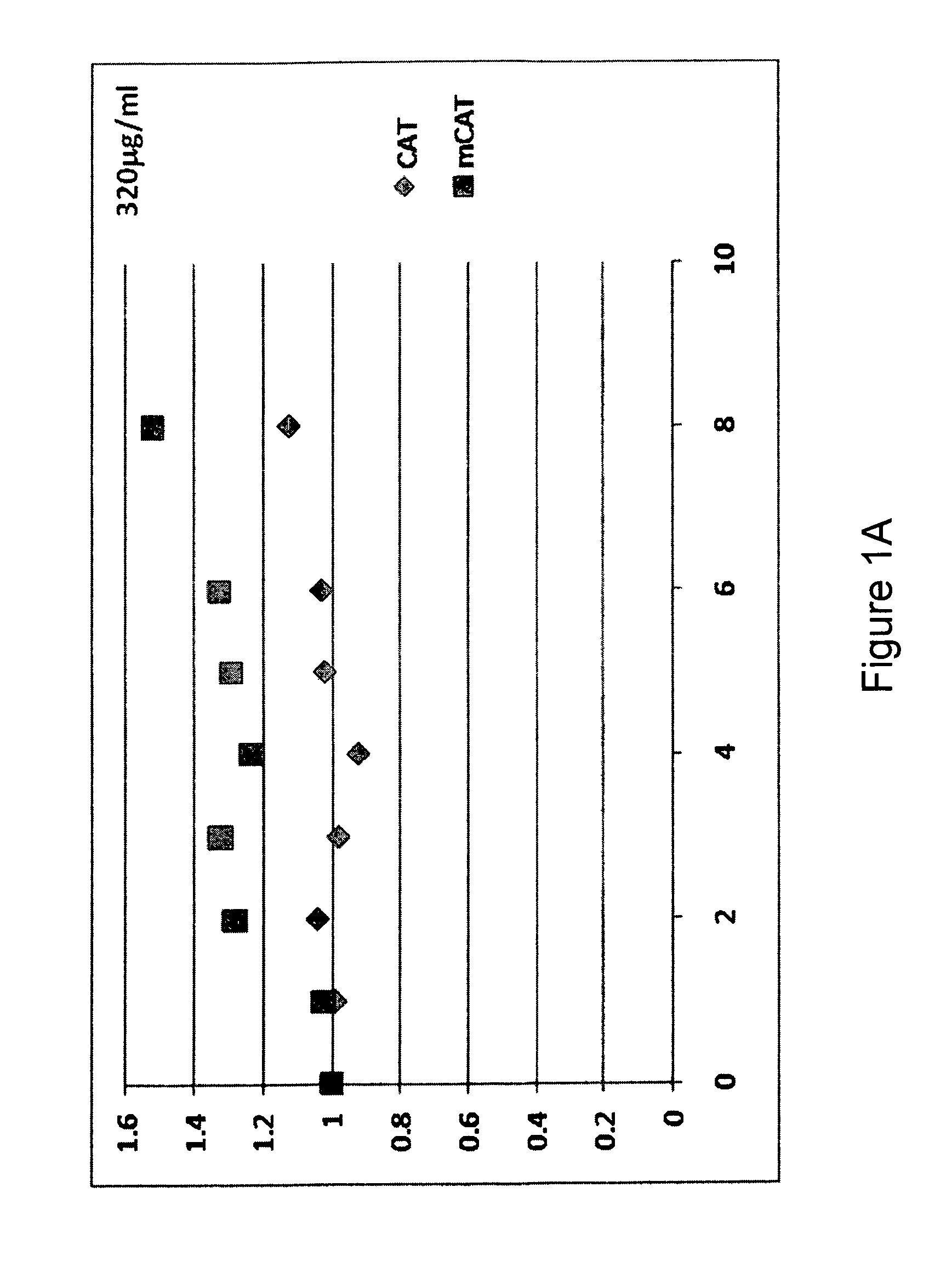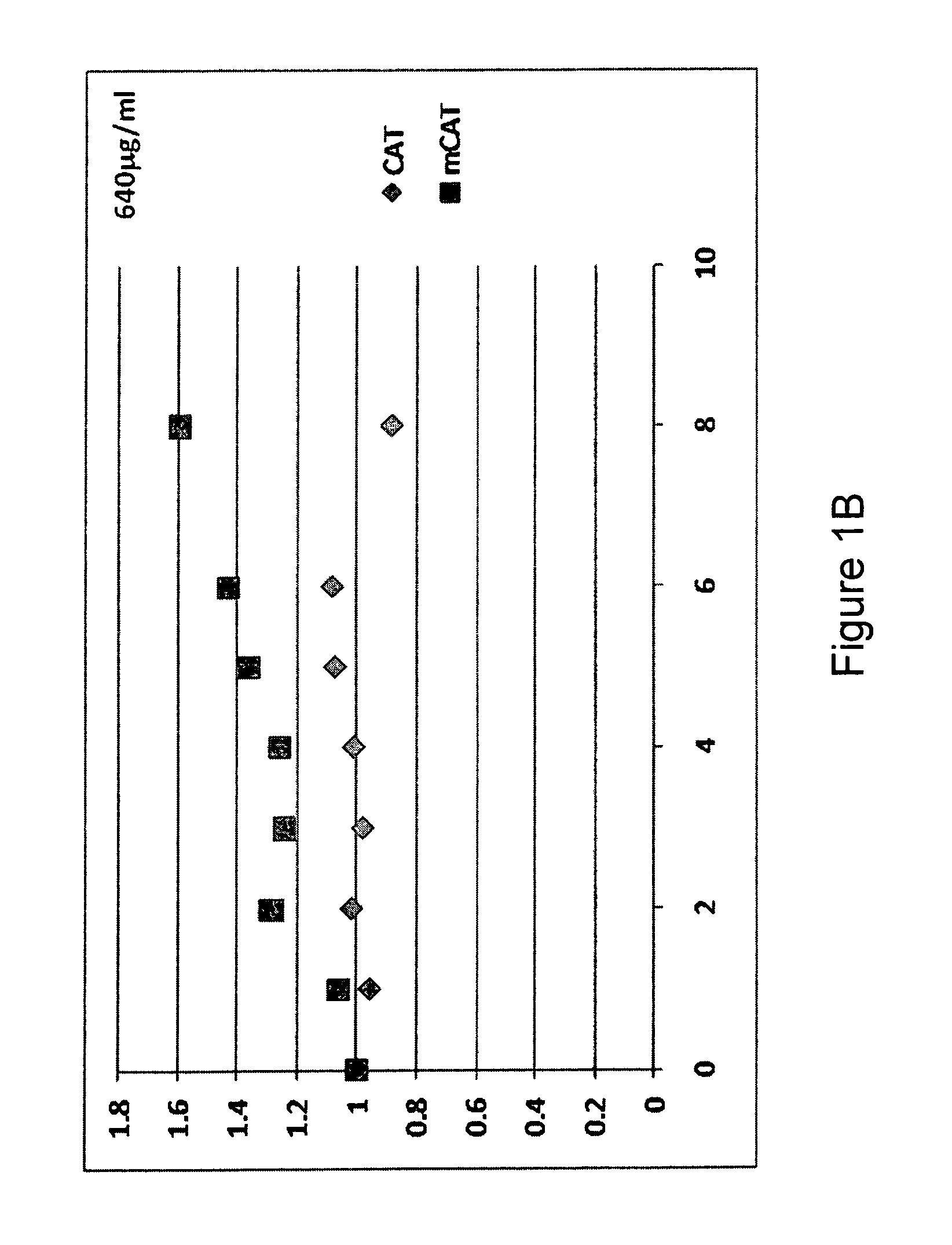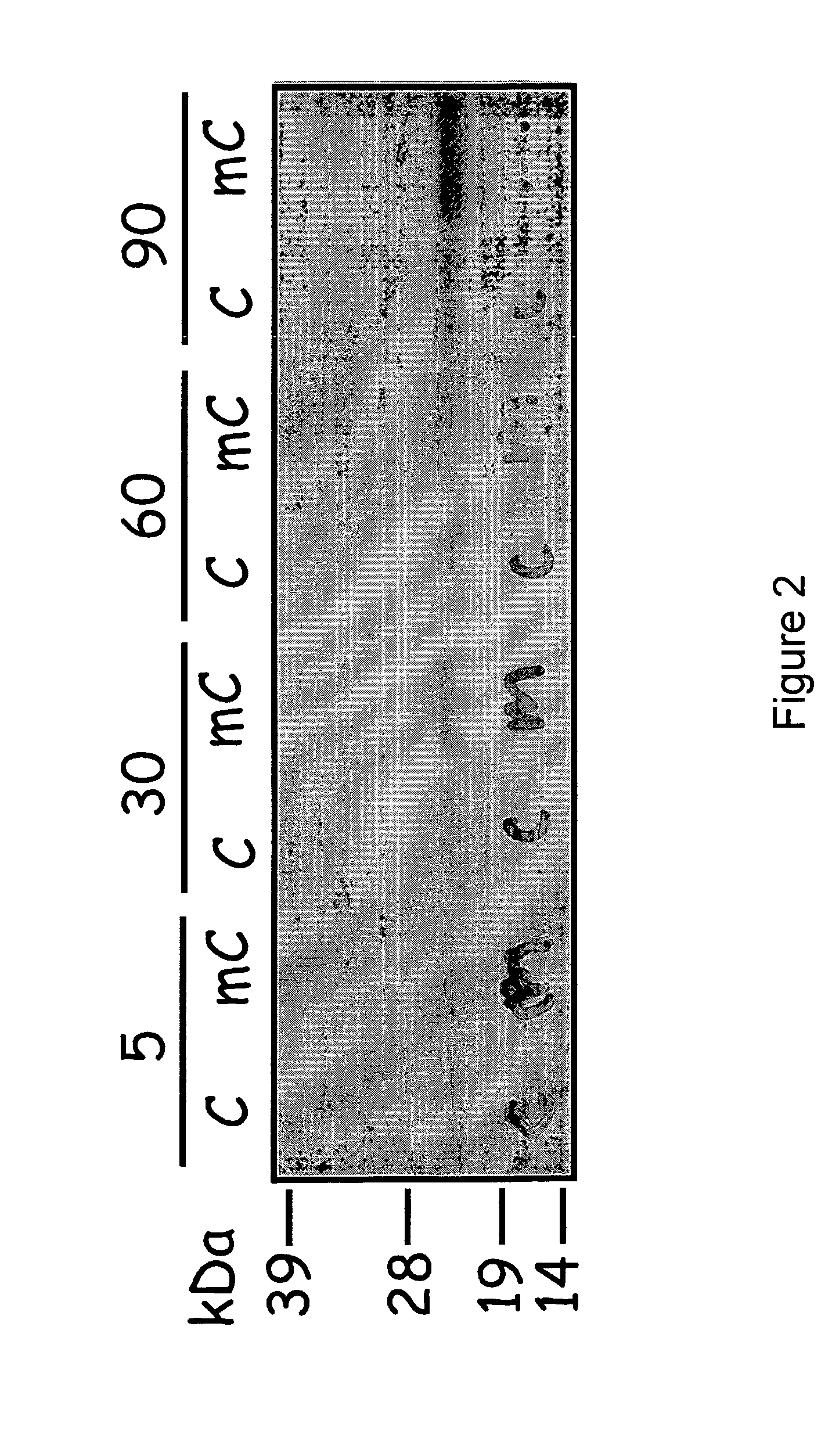Reengineering mRNA primary structure for enhanced protein production
a technology of enhanced protein and primary structure, which is applied in the direction of activity regulation, biochemistry apparatus and processes, and initiates by scanning mechanisms that do not consider the effects of potential initiation codons, and codons in mrna coding sequences and mirna-binding sites in mrnas that pose challenges to the pharmaceutical industry, etc., to achieve the effect of improving protein yield and concentration, improving efficiency and stability of protein translation
- Summary
- Abstract
- Description
- Claims
- Application Information
AI Technical Summary
Benefits of technology
Problems solved by technology
Method used
Image
Examples
example 1
Modification of Multiple Translation Initiation Sites within mRNA Transcripts
[0074]The presence of multiple translation initiation sites within the 5′-UTR and coding regions of mRNA transcripts decreases translation efficiency by, for example, diverting ribosomes from the authentic or demonstrated translation initiator codon. Alternatively, or in addition, the presence of multiple translation initiation sites downstream of the authentic or demonstrated translation initiator codon induces initiation of translation of one or more protein isoforms that reduce the translation efficiency of the full length protein. To improve translation efficiency of mRNA transcripts encoding commercially-valuable human proteins, potential translation initiation sites within all reading frames upstream and downstream of the authentic or demonstrated translation initiator codon are mutated to eliminate these sites. In preferred aspects of this method, the mRNA sequence is altered but the resultant amino ...
example 2
Modification of miRNA Binding Sites within mRNA Transcripts
[0099]MicroRNA (miRNA) binding to target mRNA transcripts decreases translation efficiency by either inducing degradation of the target mRNA transcript, or by preventing translation of the target mRNA transcript. To improve translation efficiency of mRNA transcripts encoding commercially-valuable human proteins, all known or predicted miRNA binding sites within a target mRNA's 5′ leader sequence, 5′ untranslated region (UTR) sequence, coding sequence, and 3′ untranslated region (UTR) sequence are first identified, and secondly mutated or altered in order to inhibit miRNA binding.
[0100]In a preferred aspect of this method, the seed sequence, comprising the first eight 5′- nucleotides of the mature miRNA sequence is specifically targeted. Seed sequences either include 5′ nucleotides 1-7 or 2-8 of the mature miRNA sequence. Thus, a seed sequence, for the purposes of this method, encompasses both alternatives. The miRNA seed seq...
PUM
| Property | Measurement | Unit |
|---|---|---|
| concentration | aaaaa | aaaaa |
| concentration | aaaaa | aaaaa |
| concentration | aaaaa | aaaaa |
Abstract
Description
Claims
Application Information
 Login to View More
Login to View More - R&D
- Intellectual Property
- Life Sciences
- Materials
- Tech Scout
- Unparalleled Data Quality
- Higher Quality Content
- 60% Fewer Hallucinations
Browse by: Latest US Patents, China's latest patents, Technical Efficacy Thesaurus, Application Domain, Technology Topic, Popular Technical Reports.
© 2025 PatSnap. All rights reserved.Legal|Privacy policy|Modern Slavery Act Transparency Statement|Sitemap|About US| Contact US: help@patsnap.com



